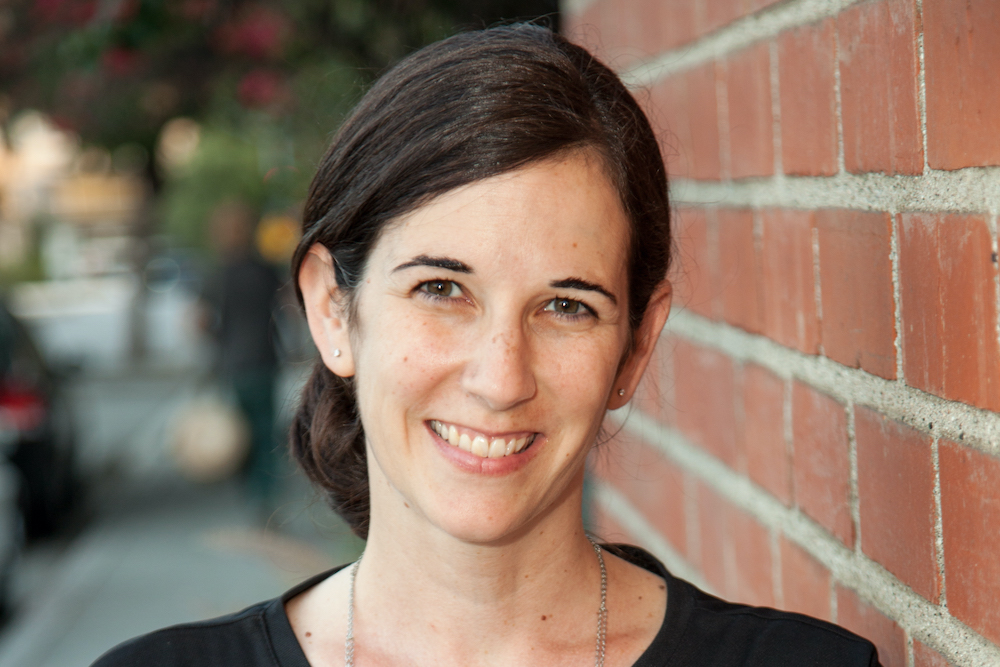
Christine Margiotta is the executive director of Social Venture Partners Los Angeles. Her career has focused on issues including homelessness, education, economic justice, racial equity, and LGBTQ rights. Before joining the “What Are Today’s L.A. Women Fighting For?” panel, the third event in the Zócalo/Natural History Museum of Los Angeles County series When Women Vote, Margiotta called into the virtual green room to talk about her recent bid for Claremont City Council, creating indoor obstacle courses to entertain her kids in quarantine, and the course that started her political awakening.
Where was your favorite place to go growing up in Claremont?
I was a gymnast, so I spent many, many hours of each day training. I was also a coach. So I would go from school to coaching some of the younger athletes, and then I would train in the evening. I loved it. It was such a formative part of my childhood and young adulthood.
Any particularly memorable moments from your time competing?
When you’re earlier in your gymnastics training, you do what’s called compulsories, where everyone has the same music and the same floor routine. And I just think back to my parents sitting through all that—how dreadfully boring and how horrible that music is. But they came to every meet. The reward for years of training is you get to the point where you can choose your music and your own choreography.
My last year, as a freshman in college, I was able to [do that], and I had a song from the Batman soundtrack. There are limits around what kind of music you can choose, but that was definitely a highlight—getting to have music that was not the same.
You have two young children yourself now. Is there an activity or a game that’s become a favorite during COVID?
Especially because this all began in the colder months, and it was raining quite a bit, we’ve done a lot of indoor obstacle courses—we set up hula hoops and couch cushions and a little gymnastics mat. That’s definitely become a tradition. They love tearing up our house. And I don’t blame them. They can’t go anywhere, and they’ve been such good sports. They’ve been really amazing.
You made a strong run for Claremont City Council this year, too. During the campaign, you personally phoned nearly 1,500 residents. How did those conversations inform your sense of Claremont today?
I was struck by how much people here care about our community. We did a
follow-up survey recently, and in the early responses, the number one thing people care about is the availability of affordable housing. In this community, they want to make sure that housing is affordable for people who want to live here, even when that issue didn’t impact them directly. So that’s what struck me in so many of the conversations: how much people care about the well-being of their neighbors and want this to be a place where people can live and thrive and raise their families and grow old.
Where do you come up with your best ideas?
Two things come to mind: If I’m brainstorming alone, I would say I do my best thinking when I’m moving, like when I’m out walking or just doing something active. But definitely the best ideas, from my perspective, come from community—from bringing people together and brainstorming and building on each other’s ideas. Those are some of my favorite moments.
What relaxes you?
Getting some time that isn’t structured where I can go for a walk or hang out with my kids and just be for a while. But I find I have a really hard time doing that if I have big projects or big to-dos hanging over me. Which, given how crunched time is in this pandemic, it’s been harder to find that kind of spaciousness.
Where’s your favorite place to walk?
I’ve loved getting to know our neighborhood and walking down all different streets and seeing our community on foot. It was just something I hadn’t done as much as before. But there’s something about the stay-at-home orders early in the pandemic, where I noticed lots of neighbors were antsy to get out of their houses. So I think I was not alone in that.
Who’s someone—in school or outside it—who influenced your perspective on the world?
When I think about teachers or professors, I often think about my first year at Scripps College. There was a class called Core. It was in three parts; it was a humanities series. And it was such a departure from the 13 years of Catholic school that I was coming out of. It did such a powerful job of deconstructing so many of the things that I had assumed were just the way things are.
It was a political awakening for me, and an opportunity to see the world through very different eyes.
You’ve spent the last two decades working on issues of affordable housing and homelessness. How has your perspective changed since you started out?
I am forever an optimist. I think it’s hard for me to engage in this work over the long term without feeling a sense of hope and possibility. I think it would be it would be too hard to not continue to believe that we can make real progress. I think what’s shifted for me over the last decade or so is my sense of how quickly that will happen. Both in my work at SVP where we’re working toward intersectional issues and really fighting around racial and social justice, and the experience I just went through on this campaign for Claremont City Council, I think one of the biggest realizations for me is the importance of building a groundswell of voices and advocates and activists, growing the number of people who are willing to speak up about the issues that matter.



